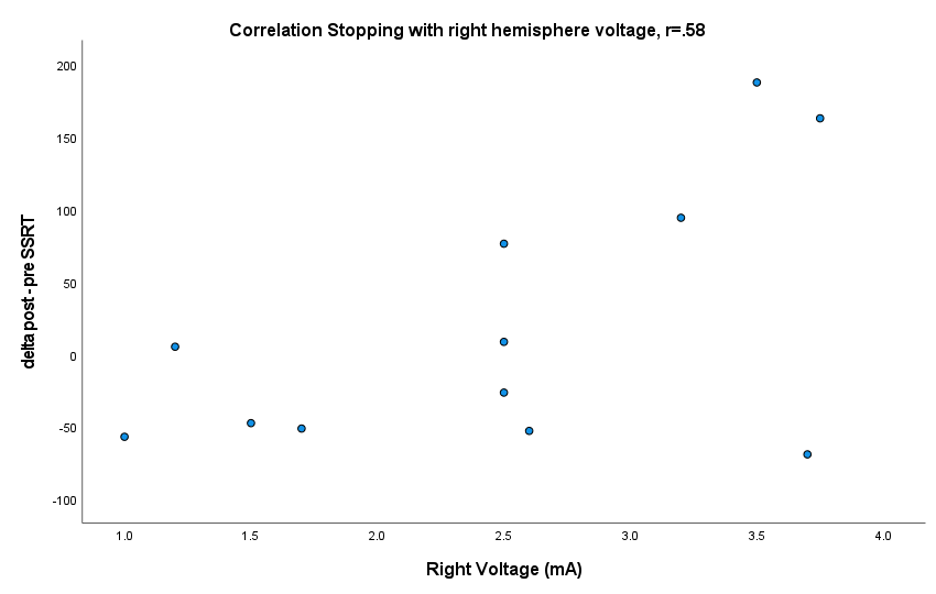Objective: We examined the role of DBS stimulation parameters on action control performance in ET.
Background: DBS is an effective treatment for the motor symptoms of Essential Tremor (ET), however, limited knowledge exists on DBS effects on cognitive control in ET, for example the ability to cancel or pause ongoing actions (action control). Impairments in action control negatively impact quality of life. The effect of DBS in ET has generally been studied by means of broad neuropsychological outcomes, and previous work suggested that individual differences in cognitive decline could be related to higher DBS parameter settings (Dima et al., 2022; Troster et al., 1999). Additional studies are required to increase our understanding of the potential impacts of stimulation settings and identify which domains may be primarily affected.
Method: Twelve ET patients (bilateral ViM) performed a Stop task both OFF (preop) and ON (postop) DBS (data collection ongoing). The Stop task required a left or right button response to the direction of an arrow and included occasional stop signals (color change in 30% of trials). With the presentation of a stop signal, participants were instructed to try to stop their initiated go response. This paradigm allows us to calculate action initiation time (Go RT) and stop signal reaction time (SSRT). Longer stopping RTs indicate difficulty to inhibit actions.
Results: Action initiation (Go RTs) and stopping speeds (SSRTs) did not change from pre- to post-DBS (ps>.3). However, when linking individual differences in DBS parameters with stopping speed (voltage, pulse width and frequency), we found that higher stimulation voltage in the right hemisphere was associated with a reduced ability to stop from pre to post DBS (r=.58, p=.05). Higher pulse width (90 versus 60 ms) in the right ViM also tended to be linked with slower stopping pre to post DBS (F=2.0, p=.1).
Conclusion: Although DBS overall did not modulate cognitive performance, individual differences in stimulation parameters appear to play a role in whether action control is impacted post-DBS. Higher voltage and pulse width negatively affected the ability to stop, highlighting a need for the development of accurate stimulation prediction models. Future studies should investigate specifics of parameters settings with the aim of optimizing both cognitive and motor outcomes in ET patients with DBS.
To cite this abstract in AMA style:
J. Kane, J. Neimat, S. Wylie, F. Phibbs, P. Hedera, V. Holiday, N. van Wouwe. The role of stimulation parameters on cognitive performance in Essential Tremor with DBS ViM [abstract]. Mov Disord. 2022; 37 (suppl 2). https://www.mdsabstracts.org/abstract/the-role-of-stimulation-parameters-on-cognitive-performance-in-essential-tremor-with-dbs-vim/. Accessed October 17, 2025.« Back to 2022 International Congress
MDS Abstracts - https://www.mdsabstracts.org/abstract/the-role-of-stimulation-parameters-on-cognitive-performance-in-essential-tremor-with-dbs-vim/

